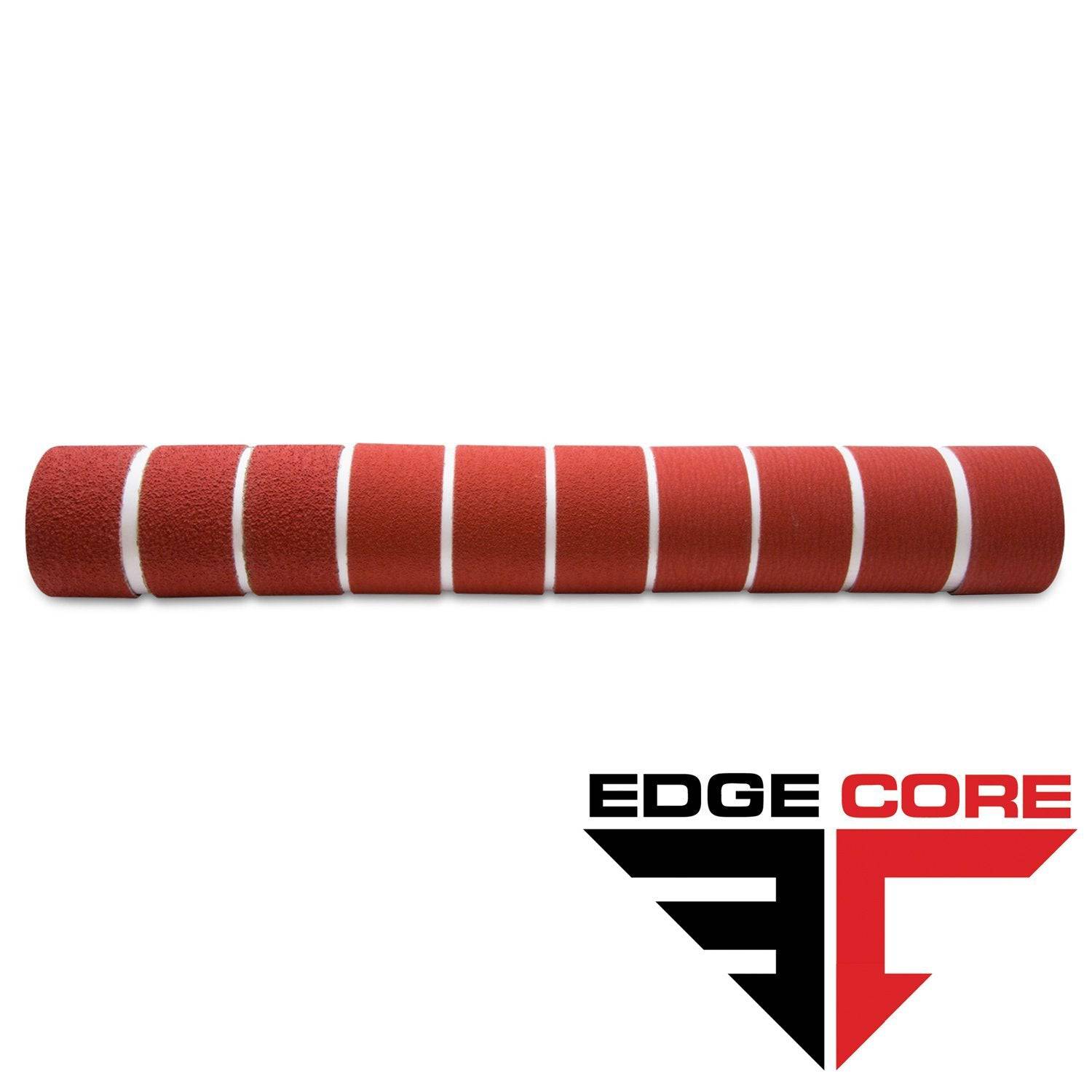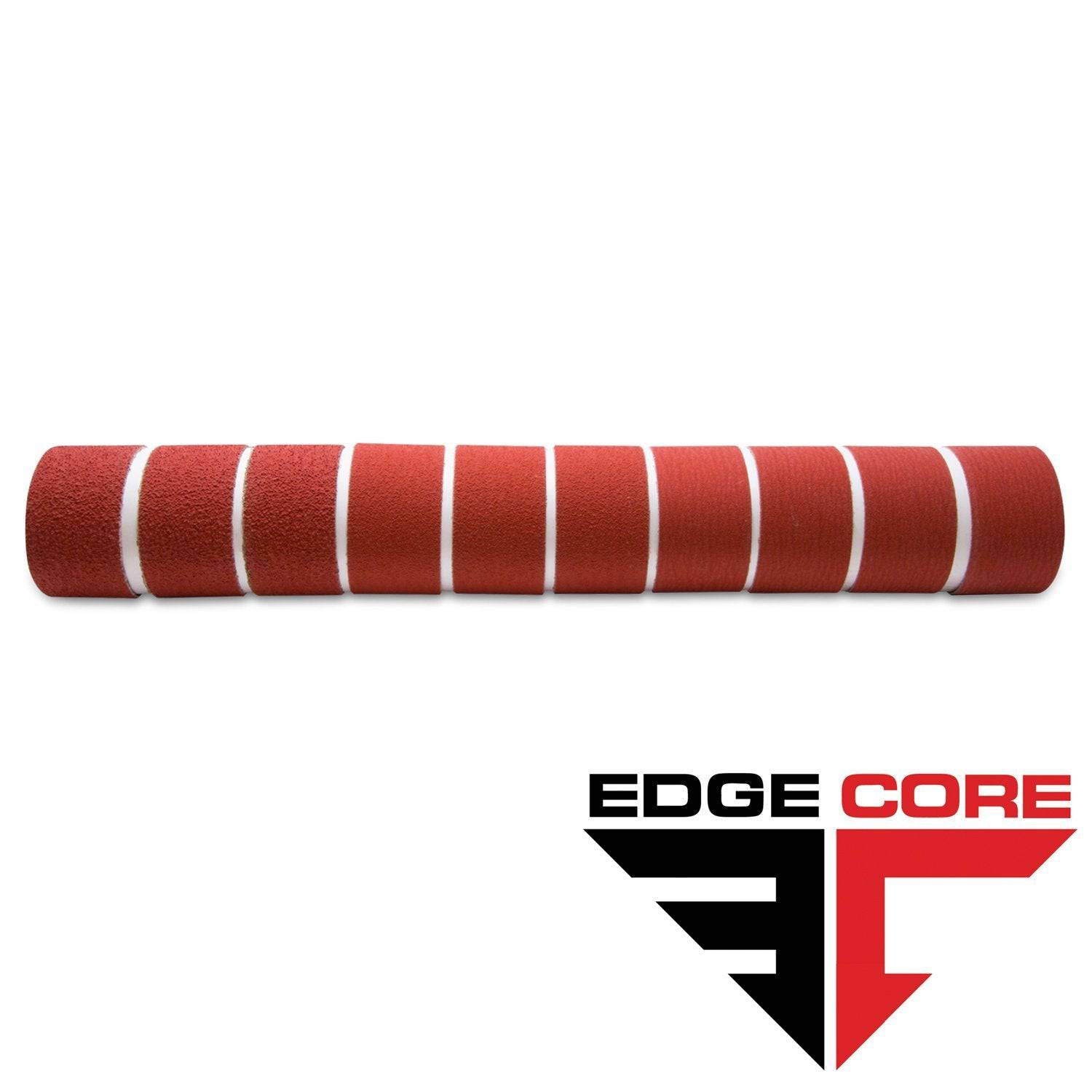Your Cart is Empty
OFFICE CLOSED 11/28 | Free Shipping over $150 (Excludes Oversized Products)
OFFICE CLOSED 11/28 | Free Shipping over $150 (Excludes Oversized Products)
Sanding Belts
Sanding Discs

The Best Angle For Knife Sharpening
by David Kranker 5 min read

Quick Summary
There are three main factors that determine the best angle to sharpen a knife at: steel hardness, blade thickness, and knife use. Angles for knife sharpening can range anywhere from under 10 degrees to over 30 degrees. Higher degrees are best for durable knives that will be used for tougher applications while lower degrees are used for softer applications (like cutting soft foods or slicing meat).
No matter how experienced you are with blade maintenance, you’re going to have questions about the best angle for knife sharpening. What’s tricky is that the answer varies depending on how you intend to use the knife. In this article, the team at Red Label Abrasives goes into detail about which angle may be best for your particular knife and how you can get ideal sharpening results.
Knife Angles Explained
In terms of angle, we're referring to the angle at which you hold your knife to the stone or abrasive during sharpening. It refers to the number of degrees that the bevel veers from the blade’s center.
A knife edge usually has two bevels, meaning there is a bevel on each side, although some knives have a single bevel. Single-beveled edges are useful for ultra-fine slicing, while dual-beveled edges are stronger and more durable.
Applying a 10 degree angle to a knife means sharpening each side at 10 degrees to create a 20-degree angle. However, there are some cases where the total angle doesn’t follow this ‘doubling’ formula: for example, traditional Japanese blades like Santoku Genten are single-beveled. If you’re not sure, check with the manufacturer. Should that not be possible, it’s usually safe to assume that the knife is double-beveled.
When choosing an angle, the most important consideration is how you intend to use the knife. Will you be slicing soft cuts of meat, cutting coarse vegetables, or carving wood? Other factors you want to take into account are:
- Steel Hardness:Steel hardness determines knife durability and is measured by the Hardness Rockwell C scale. Different grades of steel have different yield strengths (the maximum stress they can withstand without deforming), which affects the sharpening angle of a knife. Due to their higher yield strength, harder steels can be sharpened at smaller angles. Steels that are softer, however, require sharpening at steeper angles for better stress tolerance.
- Blade Thickness: A knife's sharpening angle is also determined by its blade thickness. Knives with thin blade edges are easier to sharpen down to lower angles. For thicker blades, more material must be removed to create sharper edges, so the process is more time-consuming.
Let’s take a look at common angles and how to determine which one is the best angle for knife sharpening in your case.
Angles Under 10 Degrees
Edges that cut softer materials usually have the lowest angles, as there is less risk of damage or failure. For example, straight razors are sharpened at angles of seven or eight degrees, resulting in a delicate edge that’s easy to damage. However, they aren’t used on materials hard enough to cause breakage.
Low-angle knife sharpening is best achieved using water stones. If you’re going to use a sanding disc or belt, choose an abrasive that’s at least 1000 grit (finer if possible).
Angles Between 10 and 15 Degrees
This angle creates a fine and delicate edge that shouldn’t be used for chopping, especially if the steel is harder: doing so can cause impact damage. This lower angle works well for cutting soft foods or slicing meats, which is why Japanese knives usually fall within this range. Like the knives sharpened at angles under 10 degrees, use a water stone or ultra-fine abrasive.
Angles Between 15 and 17 Degrees
With a total angle of 30 to 34 degrees, these knives will cut quite easily. Japanese knives and newer cutlery are usually sharpened at this angle before leaving the factory. Although less durable than those with higher angles, their cutting power makes it an appropriate tradeoff.
Angles Between 17 and 22 Degrees
Knives in this angle are most often used in kitchens and outdoor activities. It is also appropriate for pocket knives. Most blades manufactured in North America are approximately 20 degrees, providing a good balance between durability and sharpness. This range contains the best angle for knife sharpening when you’re looking for a general-use blade.
Angles Between 22 and 30 Degrees
Knife edges in this range are considerably more durable, making these angles appropriate for hunting knives, pocket knives, and other blades for tougher applications. The edge probably won’t chop as well as a knife intended for slicing softer materials, but it will be more durable, improving overall cost of ownership.
Angles of Over 30 Degrees
Knives that have been sharpened past 30 degrees are very durable, although their cutting ability is significantly reduced. Generally speaking, most knives won't benefit from this sharpening angle, but an edged tool like an ax, cleaver, or machete will usually respond well, particularly if they are made from softer steel.
When it comes to cutting, remember that lower sharpening angles offer finer slicing and detailed trimming. The reason for this is that knives with lower angles are sharper. Conversely, wider angles can be used for tougher cutting work because they create a stronger edge.
How Do You Know If You've Got the Right Angle?
When sharpening, how do you determine the edge angle? It's best to invest in a sharpener that sets and maintains the edge angle for you. One of the biggest difficulties in sharpening is establishing and maintaining the angle. Angle guides solve this challenge, allowing you to focus solely on sharpening. For those who struggle with freehand sharpening, these guides have been a game changer.
Knife Sharpening Tips
If you prefer freehand sharpening, using black markers is one tried and true method. After coloring the edge bevel on both sides of the blade, sharpen it until the black marker ink is removed from both sides. Eliminate all of the ink in one swipe: If you are removing the marker at the cutting edge, your edge angle is too high.
Choosing the right abrasive is also key. Below are some key considerations when you’re shopping for a knife sharpening sanding belt.
Which Abrasive is Best?
For knife sharpening, we highly recommend ceramic, a premium abrasive with a fast cut rate and long working life. Our premium ceramic sanding belts continuously micro-fracture during use to reveal sharp and pristine edges.
If you need a finer grit, zirconium oxide (zirconia) and aluminum oxide are excellent choices:
- Zirconia: Zirconia belts are often used in knife-sharpening kits and steel fabrication shops because of their high heat resistance. They can be used in practically all phases of knife making, including sharpening.
- Aluminum Oxide: The abrasive properties of aluminum oxide (A/O) are widely used in metal fabrication and knife making. Since this material fragments easily, the cutting surface remains sharp. For knife making, closed coat aluminum oxide is preferred since it covers 95% of the belt surface and ensures a more uniform sharpening.
Red Label offers several different options for knife sharpening sanding belts. If you’re thinking about making knives, Red Label Abrasives also sells all-inclusive knife making kits with belt sizes ranging from 1" X 30" to 2" X 72". Each kit includes everything you need to make and maintain your own knives.
Red Label Abrasives: A Cut Above The Rest
At Red Label Abrasives, we take pride in being a leading manufacturer of high-quality abrasives. Our industrial-grade sanding belts, discs, and sheets are both affordable and long-lasting, and we specialize in creating abrasives for niche applications like knife making. Our most popular knife making abrasives are our 2" x 72" sanding belts.
We’re a family-owned company that has been serving multiple industries for almost 40 years, so you can count on a premium product and 100% customer satisfaction. For more information or to place an order, please call 844-824-1956 or fill out our contact form and we’ll soon be in touch!
ABOUT THE AUTHOR
David Kranker is a writer and creative maker who has been covering the abrasive and knife-making industries on the Red Label Abrasives Blog since 2020. David spends his time continually researching sanding and bladesmithing to provide readers with the latest and greatest information. In his free time, David utilizes abrasives for many different home and auto projects at his home in Delton, MI.
Belt Packs Made For Knife Makers

2 X 72 Inch Knife Makers Sanding Belts Assortment

2 X 60 Inch Knife Makers Sanding Belts Assortment

2 X 48 Inch Knife Makers Sanding Belts Assortment

2 X 36 Inch Knife Makers Sanding Belt Assortment

2 X 42 Inch Knife Makers Sanding Belts Assortment

1 X 30 Inch Knife Makers Sanding Belts Assortment

1 x 42 Inch Knife Makers Sanding Belt Assortment
Shop By Product Category





Why Choose Red Label?







